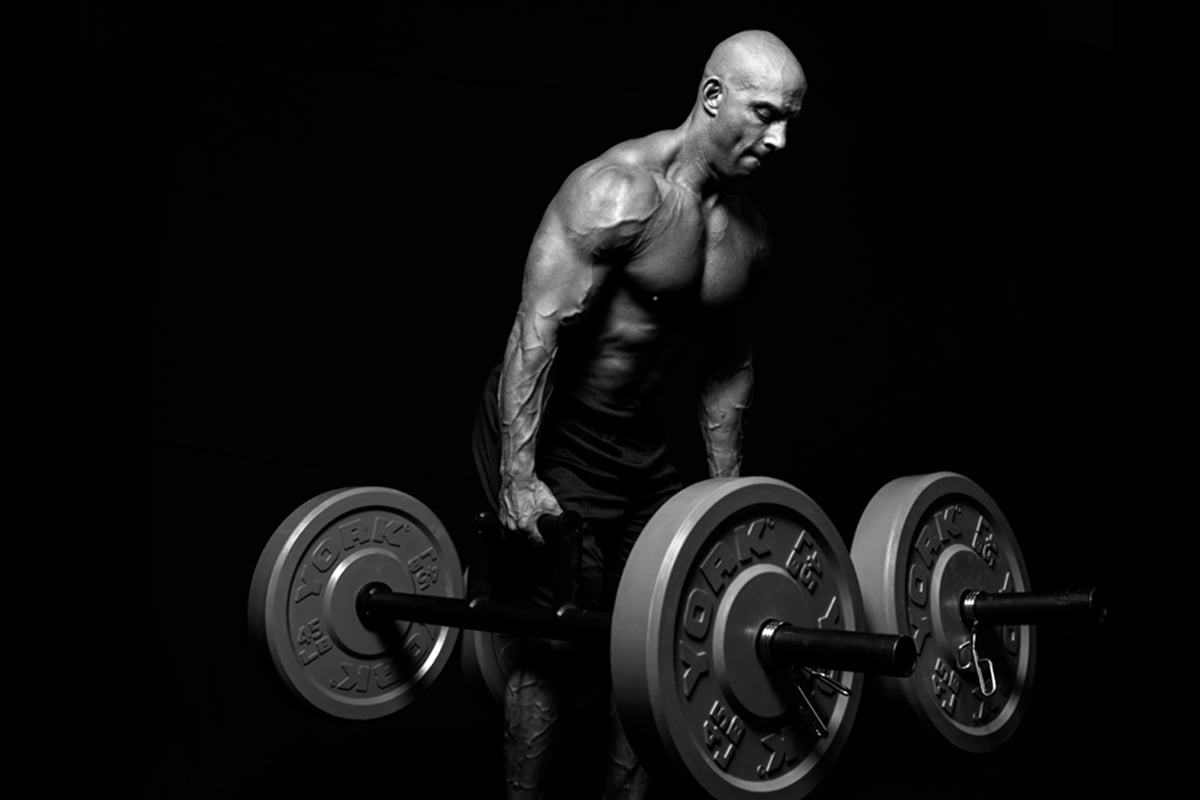User 4484
Guest
Al is such a likeable guy! No macho bullshit.

Frank was the man. I enjoyed watching him compete
Maximum Strengththe general opinion in Sports science seems to be that if you lift more than 40% of 1RM, you can achieve a carry-over to maximal strength.
Grinding Is Precisely What You Will Doyou won't be "grinding" when doing 50 reps straight.
since my body seems to thrive on lactic acid
my body seems to thrive on lactic acid (I had a knack for both wrestling and middle-distance running, but never was a great sprinter)
I actually seem to make longer-lasting strength gains with higher reps.
That is a very rough guideline and hardly more accurate than Morrison's rep calculation. You will find people who can do 10 reps @ 85%, there is no reason they should do 1-5 instead. And please note that I said "carry-over", meaning there can be a positive effect on 1RM. I didn't say "optimal approach".Maximum Strength
Resistance Training increases strength.
However, for Maximum Strength development occurs with loads of approximately 85% of 1 Repetition Max with 1 - 5 Repetition per set.
I have to disagree here. In fact, feel free to watch any footage of Indian wrestlers doing their calisthenics for hundreds of reps, you'll be hard pressed to find a single "grind" there. The same holds true in my experience for wrestlers doing reps with weights. I have quoted the East German handbook "Ringen" (by Gain/Hartmann/Tünnemann, East Berlin 1980) before, who included a test for reps in their program. The test is maximum reps with a given weight (75% of the weight class limit) in 45 seconds; the target reps range from 30-45 depending on weight class and exercise. Sorry, that is not my definition of a "grind", and if anything, you'll have the time to grind the last 3 reps or so.Grinding Is Precisely What You Will Do
Higher repetition with a loads becomes ever harder, as muscle fatigue sets in and you near failure in an exercise. You have to dig each repetition out, grind it out.
Please note again that I wasn't arguing for strength endurance training as the ideal form to increase maximum strength. I can tell you my strength numbers got pretty decent by doing so, in fact I only did 1-2 months of max strength per year, if that. However, this discussion started off with S&C for wrestling, and I happen to have quite a bit of practical experience with that. As it happens, wrestling is predominantly a strength-endurance event when it comes to S&C for competition, as we can see from the duration (6 minutes), and it would be pretty easy to back it up by lactate analysis. Therefore, I have argued in post #56 that the differences in relative strength between heavyweights and lightweights may explain why basic BWEs seem to be favored by many famous heavyweights, but rarely by lightweights. In all cases, however, one form or another of strength endurance training is an absolute MUST for wrestling. Whether or not that limits your theoretical powerlifting performance is pretty much irrelevant, as long as you are strong enough for wrestling. What I can say, though, is that in my case it was enough to get me noticed by the local powerlifters, in fact they tried to recruit me for their team.Strength Endurance
Some individual do better with higher repetition training.
Strength to some degree can be increased with this type of training.
However, Strength Endurance Training dramatically limits the amount of Maximum Strength that can be developed.
Research and Anecdotal DataThat is a very rough guideline
Very Little CarryoverAnd please note that I said "carry-over", meaning there can be a positive effect on 1RM. I didn't say "optimal approach".
The test is maximum reps with a given weight (75% of the weight class limit) in 45 seconds; the target reps range from 30-45 depending on weight class and exercise.
In fact, feel free to watch any footage of Indian wrestlers doing their calisthenics for hundreds of reps, you'll be hard pressed to find a single "grind" there.
The same holds true in my experience for wrestlers doing reps with weights.
The test is maximum reps with a given weight (75% of the weight class limit) in 45 seconds; the target reps range from 30-45 depending on weight class and exercise.

I am very well aware of the defitions of strength endurance, maximal stregnth etc. and how they are commonly trained. Neither have I argued that doing reps for 45 seconds was maximal strength (there are separate tests for that in the book I quoted, feel free to look them up). I have merely argued that the sheer number of reps doesn't turn a certain exercise into a "grind", in fact, "grinding" is a lot more common for maximal efforts in these exercises. However, the picture is more complex than the article of Mr. Thibadeu suggests. I would refer to Charles Poliquin here, who once suggested training according to fiber distribution, and implied it would be more productive for individuals with certain fiber distribution to train predominantly in certain rep ranges. In fact, he said that a lot of good wrestlers were "earth types" and as such usually better off with higher reps (The Five Elements | T Nation).Research and Anecdotal Data
Research and anecdotal data have demonstrated that Maximum Strength is built with higher loads and lower repetitions.
Very Little Carryover
Each type of strength training provide some carryover to another type of strength.
This is a test of Strength Endurance.
To increase Maximum Strength the parameters need to be adhered to; low repetition and heavy load.
Your right, if you make something light enough, it's not going to be a grind nor will it do much to increase Maximum Strength.
To reiterate, if you make something light enough, it's not going to be a grind nor will it increase Maximum Strength.
This type of training is Strength Endurance.
This is a test of Strength Endurance not Maximum Strength.
0-100: Know Your Training Percentages

From 0 – 100: Know Your Percentages - Thibarmy
While training percentages can vary depending on how you're feeling on a given day, they can still be extremely useful.thibarmy.com
This an excellent article that provide a better perspective of the Training Percentages that are most effective at developing the different Types of Strength: Maximum Strength, Power, Speed, Hypertrophy, and Strength Endurance.
There is a multitude of reputable research on this and good anecdotal data from decades on that support this, as well.
Hello,
In general, for most people, the best option is to train while using a wide variety of rep range, but also a wide variety of moves. This is claimed by Steve Maxwell or Ido Portal for instance. Using this variety prevents from overuse injury and builds durability.
Pet'
Thank you for your responses, I have started to do slow repetitions with peak contractions and isometrics.This.
Reliance on any one strategy is going to leave holes. It doesn't take a lot of pondering to apply SAID to any approach and you'll get the answer to what the primary adaptive response will be, and what the carryover is liable to be. Primarily a mix of metabolic stress and tension when it comes to generating strength and size. Leaving out higher tension work is going to leave holes in development of max effort and beneficial tendon remodeling that needs minimum 70% MVC to obtain (this does not appear to be negotiable). A high volume/low load approach can cover a lot of ground but some form of higher tension work should be incorporated.
High volume movements that have other purposes such as mobility or to mimic a sport specific pattern, need to be looked at a little differently as well.
Thank you, Jeff! What did you do to work on it? I’m going to work on this! I think I have an imbalance as my left arm is stronger as I had golfer’s elbow in my right for a time and developed to the left side by continuing to workout.Nice power @LvlUpStr !
If i may note something: maybe it's the camera angle but it looks like your right elbow flares significantly wider than your left. Your torso twists as well. I'm not pointing this out for aesthetic reasons, but I have had a simlar issue and it was tied to/led to shoulder problems.
Similar issue here, golfers's elbow in both arms at one point.Thank you, Jeff! What did you do to work on it? I’m going to work on this! I think I have an imbalance as my left arm is stronger as I had golfer’s elbow in my right for a time and developed to the left side by continuing to workout.
